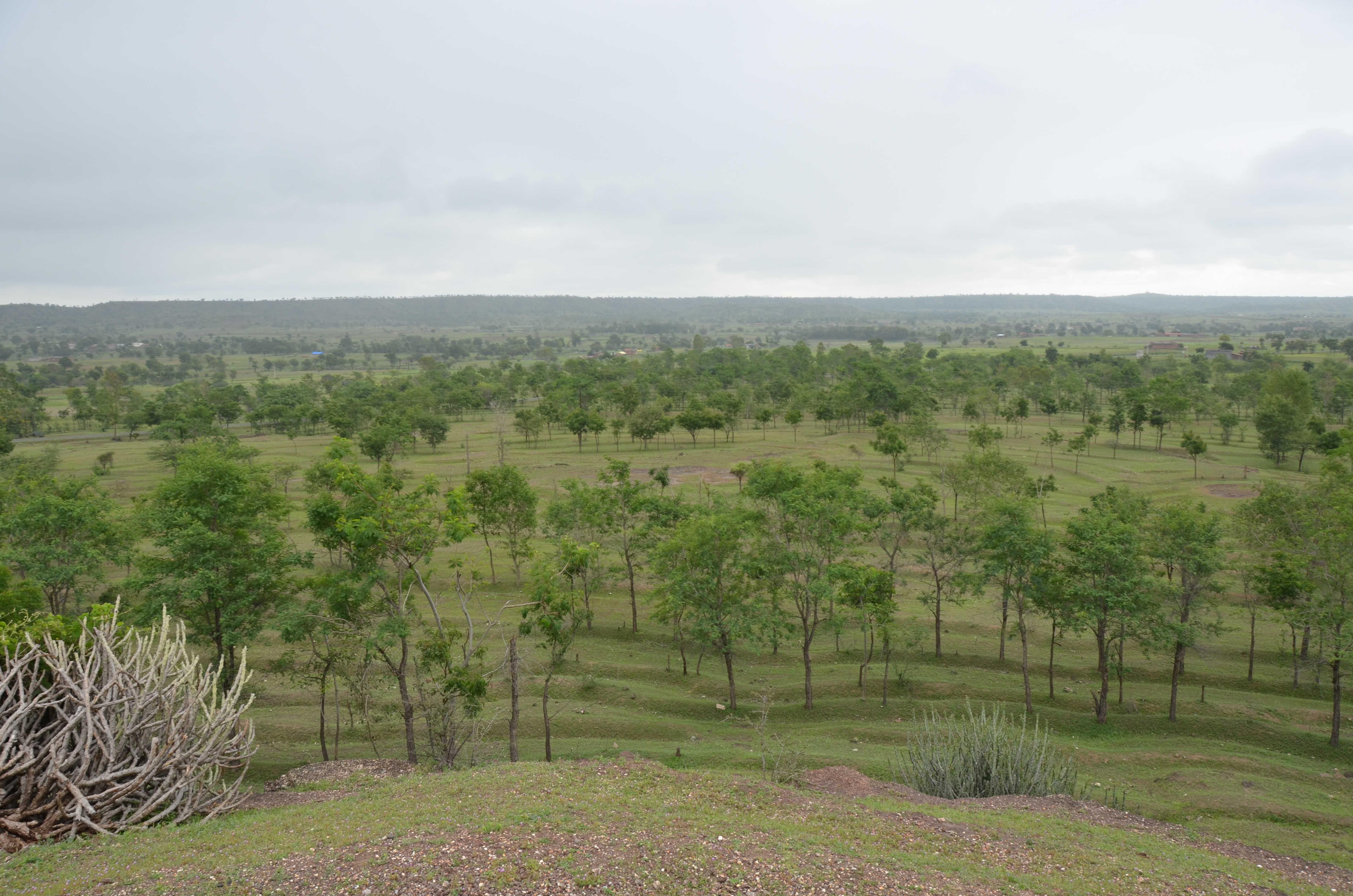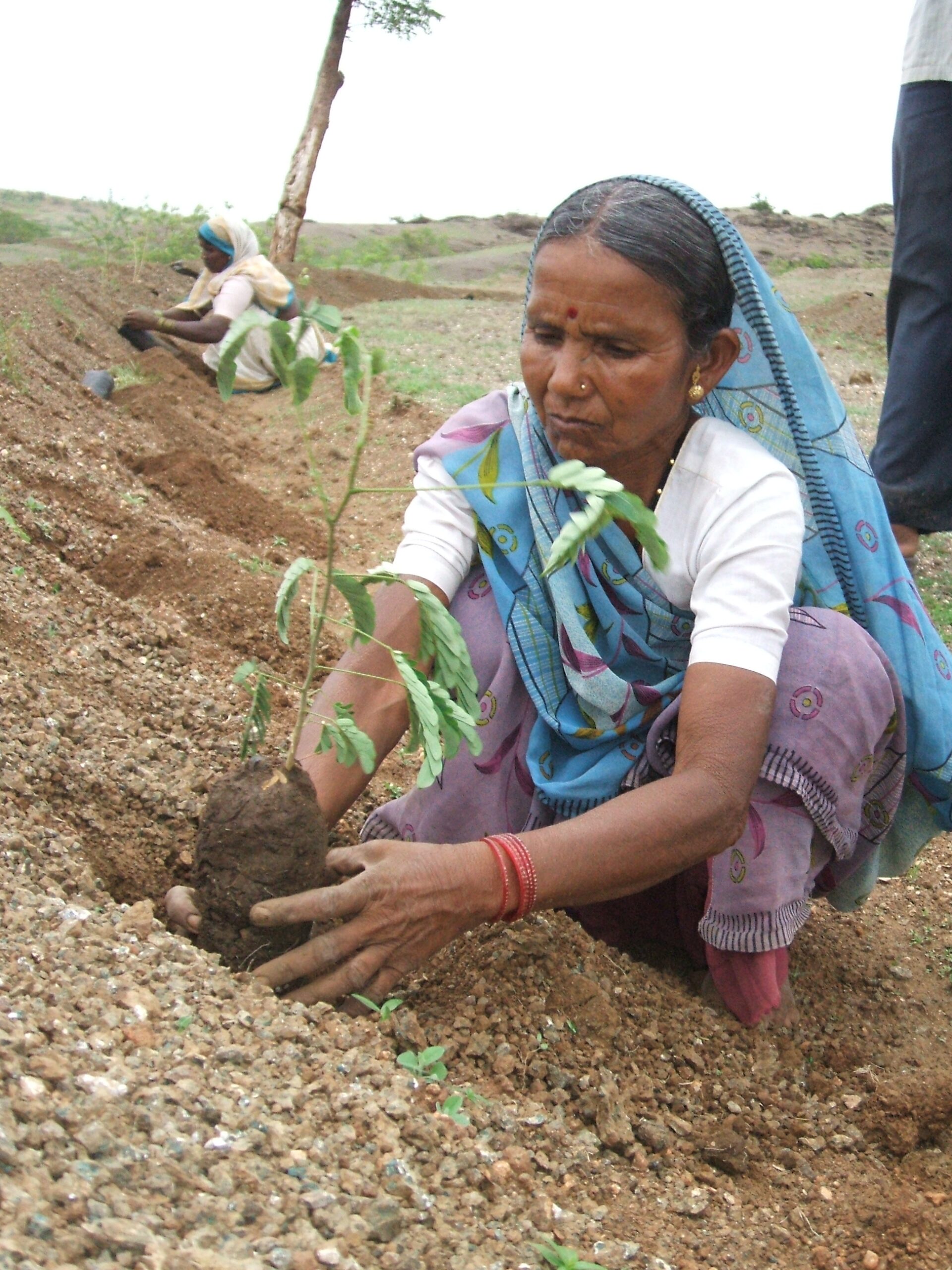
-By K.V. Maitreyi & Harshal Khade
“Twenty five percent of India’s total land is undergoing accelerated desertification, while 32 percent is at the brink of desertification, critically affecting productivity, livelihoods and food security of millions across the nation[1]”
Desertification is seen as one of the most pressing issues affecting the lives of millions across the arid and semi- arid regions of the world. It is a consequence of a series of land degradation processes, where water acts as a limiting factor for land use patterns of the ecosystem. However, owing to the current rate of human activities, this natural process has accelerated and is posing serious risks of decreased productivity and food insecurity. This post underlines the causes and impacts of desertification. It also traces the initiatives taken by Watershed Organisation Trust (WOTR), in combating desertification and ensuring sustainable livelihoods for the communities.
According to the United Nations Convention to Combat Desertification (1994), desertification is defined as ‘land degradation in arid, semi-arid and dry sub-humid areas resulting from various factors including climatic variation and human activity’. It affects the livelihoods of rural people in drylands, particularly the poor, who depend on livestock, crops, limited water resources and fuel wood. It occurs as a result of a longterm failure to balance the human demand and the ecological services. In the present scenario, the pressure on drylands for providing services like food, fuel, water is increasing owing to a variety of human factors (population increase and land use patterns) and climatic factors (such as droughts, unseasonal rainfall, etc.). While the global interplay of these factors is complex, it is however possible to understand the localised impacts of desertification.
In India, about 69% of the geographic area accounts to drylands that is highly vulnerable to climate variability and elevated erosion levels[2]. 25% of India’s total land is undergoing accelerated desertification, while 32 percent is at the brink of desertification, critically affecting productivity, livelihoods and food security of millions across the nation.[3] According to the fifth National Report on Desertification, Land Degradation and Drought, Rajasthan has the most area under desertified land (23 mha), followed by Gujarat, Maharashtra and Jammu and Kashmir (13 mha each) and Orissa and Andhra Pradesh (5 mha each).
Over the past 50 years, cropping patterns have changed drastically, primarily on economic considerations. Studies have revealed that the share of cereal production in Maharashtra is steadily decreasing and the share of horticultural crops is increasing. However, in the present scenario the extent of crop intensification is seen to pose a threat of groundwater depletion, land degradation and declining soil health. Crop intensification in Maharashtra has been concentrated towards water intensive cash crops like sugarcane, cotton, pomegranate, soybean and many other varieties.[4] Much of this change is premised on the extensive tapping of groundwater resource through bore wells. This has resulted in rapid declining of groundwater levels. The problem of climate change and climate variability have further exacerbated this problem; case in point, the current water crisis in the state. Hence, there arises a serious need to balance the demand of water coupled with an augmented supply in order to sustain livelihoods.
Watershed Development- A cogent solution to desertification
Since its inception, WOTR has pioneered watershed development across resource fragile and rainfed areas of the nation. We at WOTR believe that holistic ecosystem based watershed development is the answer to breaking the vicious cycle of overexploitation of natural resources – no top soil, no vegetation, increased run-off of water and further erosion of top soil.
Watershed development involves undertaking different Soil and Water Conservation (SWC) measures in order to enhance the water table and prevent land degradation. Additionally, WOTR empowers the rural communities by organising them to deal with land degradation and water scarcity. WOTR emphasises community participation and ownership while working towards ecological regeneration and “catching rain wherever it falls” through Ridge to Valley (R2V) approach.
CASE STUDY: Darewadi- from an arid land to a productive land
Darewadi, a drought prone village in the rain shadow region of Maharashtra, portrayed a grim picture of depleted natural resources. Water for drinking and irrigation was ensured for not more than 3 months of the year. Its natural resources of land, soil and water were depleted to an extent that the community resorted to migration for survival.
Darewadi was on the verge of desertification in 1996 when the villagers approached WOTR. It was Fr. Hermann Bacher, the founder of WOTR and the father of watershed movement in Maharashtra, who identified the need to restore Darewadi. Thereon, watershed activities were implemented in Darewadi. The soil and water conservation measures involved digging a series of continuous trenches along the contour or ridge that act as speed breakers and control erosion as well as harvest water. Additional barriers, such as gully plugs, stone bunds, earthen nallah bunds, gabion structures, check weirs and percolation tanks were constructed. These aided recharge of ground water through percolation of harvested water into the ground. These measures were ecological revitalisation infrastructures that resulted in the stabilisation and development of the Darewadi watershed. Inclusiveness of the community, ensured through shramdaan (voluntary labour) in the beginning, helped develop a sense of ownership for the project amidst the community. Watershed development placed Darewadi on the road to progress. The cropping area per season increased coupled with an enhancement in crop diversification. Additionally, there was a remarkable increase in the vegetation cover and the ground water table as depicted in the following table:
| S.No | Impact Indicators | 1996-Pre-Watershed | 2001-Post watershed completion | 2009-Post project monitoring |
| 1. | Cropped Area | |||
| Kharif crops | 490.24 Ha | 616 Ha | 674 Ha | |
| Rabi crops | 310.18 Ha | 417 Ha | 572.47 Ha | |
| Summer Crops | 0 Ha | 38 Ha | 43.50 Ha | |
| 2. | Main Crops | Bajra | Bajra, Onion, Tomato, Wheat, Jowar, Maize, Vegatables | Bajra, Onion, Wheat, Pulses, Sorghum, Tomato, Vegetables, Maize, Gram. |
| 3. | Waste lands | 167.83 Ha | 17 Ha | 11.60 Ha |
| 4.
|
Agricultural Employment | 3-4 Months/Year | 9-10 months/Year | 9-10 Months/Year
|
| 5. | Water table | -5.8 m | -3.5 m | -2.6 m |
| 6. | No. of wells | 23 | 63 | 127 |
Source: Voices from Darewadi Watershed: The Indo-German Watershed Development Programme, Maharashtra, WOTR.
The above impact indicators clearly indicate a prominent change in the landscape of Darewadi in terms of rejuvenation of natural resources, increase in agricultural productivity and enhancement in livelihoods.

Water stewardship through stakeholder engagement
Watershed development aims at conserving, rejuvenating and optimizing the use of natural resources within the watershed area. This however comes with the potential challenges of over-exploitation of groundwater resources, changes in cropping patters and deteriorating soil health[5]. Hence, there arises a serious and an urgent need to engage with communities and enable them to make informed and sustainable choices without compromising on their economic interests. To cater to this, water stewardship has been initiated by WOTR in 2015. The project aims at empowering communities to work towards maintaining an optimal balance between the demand-supply of water that is a major key to resource management.
Apart from watershed development, this initiative also incorporates value addition measures taken in the form of sustainable agriculture practices – system of crop intensification, agro-meteorology, organic farming techniques, Farmer Field Schools (FFS) and water budgeting. These activities aim at saving water coupled with its efficient use. For the purpose of effective community participation, Jal Sevaks have been identified from within the community who act as a key link between the organizations, government and the communities.
WOTR also brings the community together to work on their common ‘action plan’ for the local projects by supporting them through the multi-stakeholder engagement, where key information is made available to communities and the perspectives of multiple stakeholders (local community, the governing agencies, external institutions) are considered. This engagement creates a platform for knowledge sharing across various stakeholders, thus giving a comprehensive understanding of the problems and its possible solutions. It also provides space for innovations to set in.
Watershed development, hence, aims at preventing land degradation and harvesting water whilst restoring ecosystems as they provide a number of invaluable services such as soil nutrient cycling, fixation of carbon etc. However, owing to the current trends of climate variability and crop intensification practices, the sustainability of Watershed Development activities hinges on maintaining a balanced exploitation of natural resources. Water stewardship, thus, stands as a solution, which aims at maintaining water balance in terms of demand-supply and creating sustainable communities. This is achieved by moulding its members to become stewards of its resources in order to combat the process of desertification.
[1] Desertification affects a quarter of India’ land, 8th June 2014, Akash Vashishtha. Accessed at http://indiatoday.intoday.in/story/desertification-affects-quarter-of-indias-land/1/367345.html
[2] Walker ST, Ryan GJ, 1990. ‘Village and household economies in India’s semi-arid tropics’. John Hopkins, University Press, Baltimore
[3] Desertification affects a quarter of India’ land, 8th June 2014, Akash Vashishtha. Accessed at http://indiatoday.intoday.in/story/desertification-affects-quarter-of-indias-land/1/367345.html
[4] Shinde HR, Suryavanshi RR, Gawade BB, 2013, Extent Of Crop Diversification in Maharashtra: A region wise analysis. Agriculture Economics Research Review, , Vol. 26. ISSN: 0974-0279
[5] Joshi, P.K., Jha, A.K., Wani, S.P., Joshi, L., Shiyani, R.L., 2005. ‘Metaanalysis to assess impact of watershed program and people’s participation’. Comprehensive Assessment Research Report 8. Colombo, Sri Lanka: Comprehensive Assessment Secretariat.






